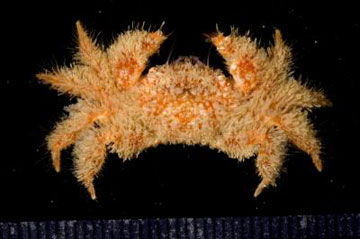Jeremy Hance -
Researchers with the Smithsonian have catalogued almost as many crab species on tropical coral reef bits measuring just 20.6 square feet (6.3 square meters) as in all of Europe's seas, finds a new paper in PLoS ONE.
The team used DNA barcoding to quickly identify a total of 525 crustaceans (including 168 crab species) from dead coral chunks taken from seven sites in the tropics, including the Indian, Pacific and Caribbean oceans.
"Given the complexity and extent of the world's coral reefs, the survey covered only a very limited depth and habitat range," said Laetitia Plaisance lead author with of the Smithsonian and the Scripps Institution of Oceanography.
"And yet we have so many more species than we ever expected." Highlighting the diversity of life found in coral ecosystems, over a third of the species encountered by researchers were only found once, while 81 percent were only found in one location.
"The finding of such large numbers of species in a small total area suggests that coral reef diversity is seriously under-detected using traditional survey methods, and by implication, underestimated," the authors write, adding that extrapolating from coral and fish diversity may have pushed scientists to underestimate the full biodiversity of coral reefs.
In their case, DNA barcoding allowed the researchers to quickly determine diversity. "DNA barcoding provides a standardized, cost-effective method of coming to grips with the staggering diversity of the world's oceans," said Nancy Knowlton with the Smithsonian and co-author of the survey.
"It has enormous potential for use in broad global surveys, allowing us to find out what is living in the ocean now, and to keep track of it in the future."
The researchers found that site in the Indo-Pacific west region were the most biodiverse, while the Caribbean was the least, which goes along with what is generally known about coral reef diversity.

Posted via http://maritime-news.posterous.com Maritime-News posterous
.jpg)
No comments:
Post a Comment